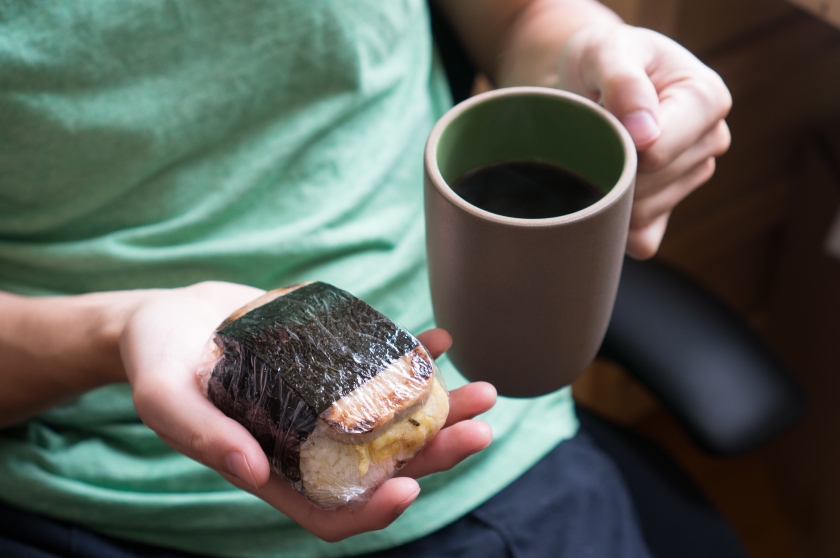Spam, Umeboshi, and Egg Musubi
Spam musubi are rice balls (onigiri or omusubi) that are topped with Spam and wrapped with nori; they are different from sushi because musubi rice is plain or seasoned with salt, whereas sushi rice is seasoned with vinegar, sugar, and salt. They are a popular in Hawaii and are great as breakfast or a portable snack. They are easy to bring along for a hike. The simplest Spam musubi are made from rice, salt, spam, and nori, but many variations can be made. Musubi Cafe Iyasume, which was just around the corner from the hotel I stayed at in Honolulu, offers avocado egg bacon Spam, umeboshi cucumber Spam, teriyaki Spam, egg cucumber Spam, and shiso Spam. The umeboshi version is my favorite since it is salty from the Spam and sour from the umeboshi. The recipe below combines Spam, umeboshi, and egg; it makes 6 musubi using a “mini” 7 oz can of Spam. If you’d like to use a regular 12 oz can of Spam, then double the recipe but make 10 musubi. Tare is a Japanese term for a sweetened, thickened soy sauce; each …


